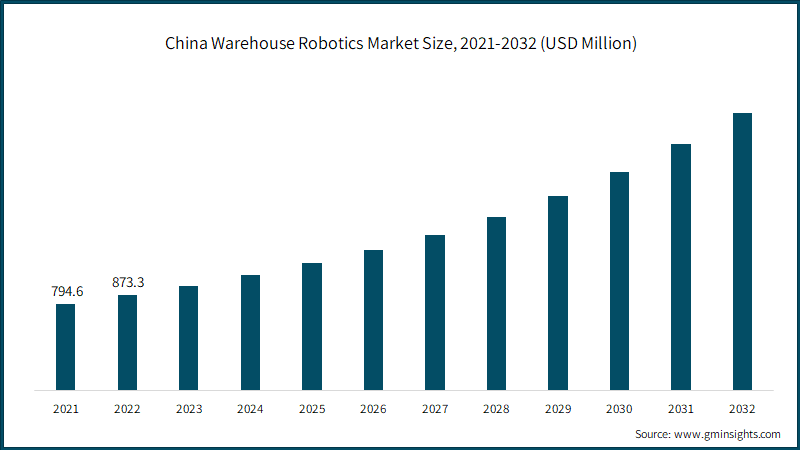Home > Semiconductors & Electronics > Automation > Robotics > Warehouse Robotics Market
Warehouse Robotics Market Analysis
- Report ID: GMI5669
- Published Date: May 2023
- Report Format: PDF
Warehouse Robotics Market Analysis
Based on type, the warehouse robotics market is segmented into Automated Guided Vehicles (AGVs), Automated Storage & Retrieval Systems (AS/RS), co-bots/collaborative robots, Autonomous Mobile Robot (AMR), Selective Compliance Articulated Robot Arm (SCARA), and others. AGV systems facilitate the handling & transportation of products in factories, warehouses, and distribution centers without permanent conveyors or human intervention. They follow the installation guide to optimize, store, and install products in the right place. AGVs accounted for the highest share of over 35% in 2022.
AGVs are gaining popularity due to their many advantages such as reduced labor costs, increased productivity, and support for the scale of automated processes. These significant benefits are encouraging transport and logistics companies to use AGVs to increase their operational efficiency. These systems are equipped with cameras, laser heads, and other sensors that help them navigate safely between machines, structures & workers. Workers can make mistakes during production or distribution, which can lead to accidents. AGVs can improve the accuracy of work, thereby preventing accidents, reducing product waste & increasing efficiency.
Based on component, the market is divided into hardware, software and services. The software segment expanded at over 15% CAGR during the forecast period. The continued growth in retail & e-commerce coupled with the growing demand for robotics to increase efficiency and reduce logistics costs is driving segment growth. In addition, using robots for transportation can help companies multitask and reduce workforce shortages. Therefore, the need to improve product performance and reduce human error has led to the hardware segment growth. Additionally, the integration of AI is expected to drive market trends in the coming years.

Based on application the warehouse robotics market is segmented into food & beverage, electrical & electronics, automotive, pharmaceutical/healthcare, e-commerce & retail, and others. Ecommerce is expected to grow significantly during the forecast period. Growth is attributed to the popularity of online shopping and the increasing demand to fulfill orders quickly & efficiently, which play an important role in electronic warehouses and distribution centers. E-commerce companies are increasingly using robots to improve supply chain management and delivery. The growing demand for faster transactions while maintaining accuracy is expected to drive the e-commerce segment growth.
The warehouse robotics market in Asia Pacific held the highest share of over 35% in 2022. Asia Pacific is expected to dominate the global automotive market during the forecast period. The rising domestic products in the region along with the presence of major players, such as FANUC Corporation, Yaskawa Electric Corporation, Singapore Technology Engineering Ltd., and Toshiba Corporation, are promoting market development. In addition, the increasing number of retails, manufacturing, and FMCG firms is expected to generate a positive influence on regional indstry share. Japan remains the world's largest exporter of robots in terms of shipments and operating units.


